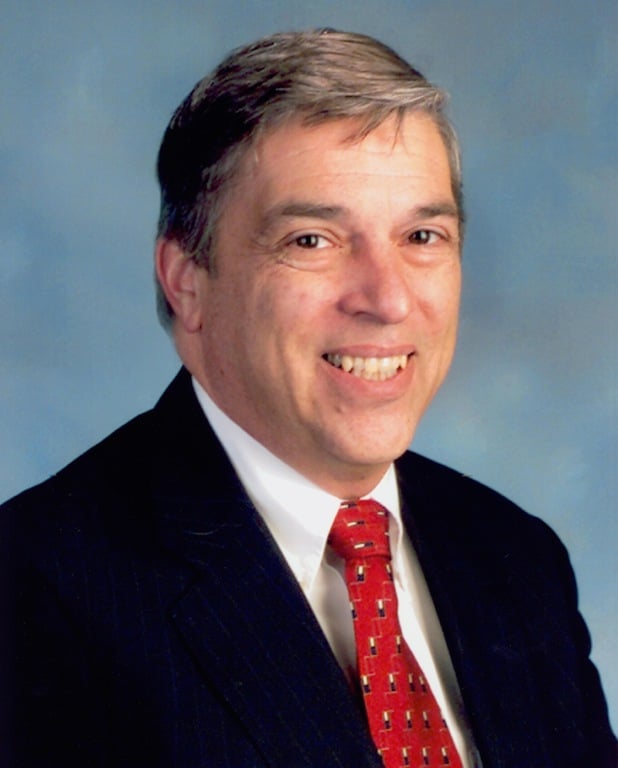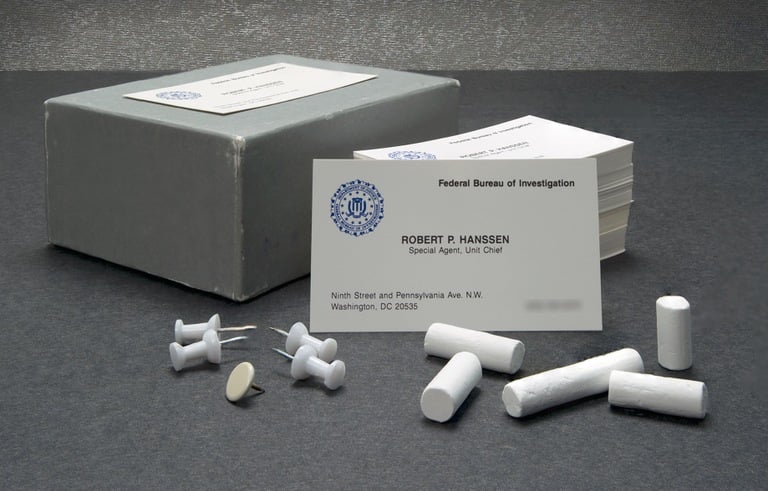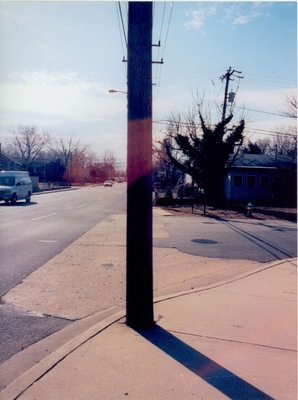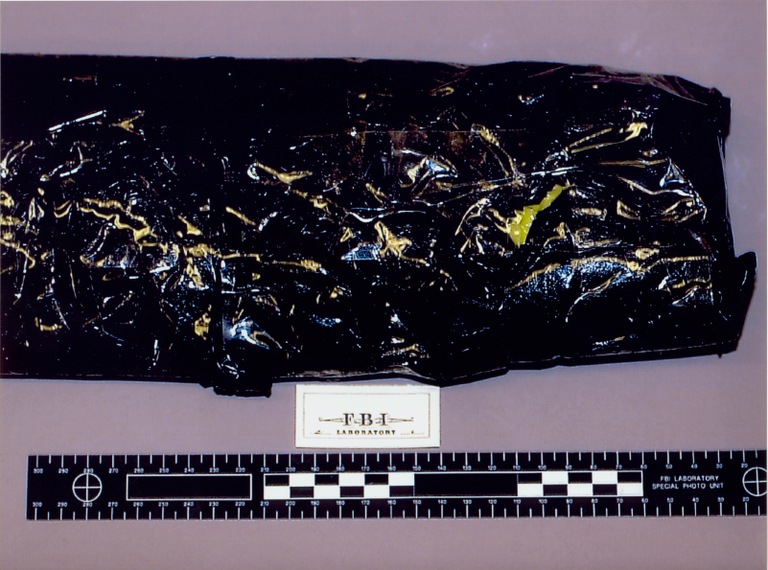Robert Hanssen
On January 12, 1976, Robert Philip Hanssen swore an oath to enforce the law and protect the nation as a newly minted FBI special agent. Instead, he ultimately became the most damaging spy in Bureau history.
On February 18, 2001, Hanssen was arrested and charged with committing espionage on behalf of Russia and the former Soviet Union. Hanssen—using the alias “Ramon Garcia” with his Russian handlers—had provided highly classified national security information to the Russians in exchange for more than $1.4 million in cash, bank funds, and diamonds.
Hanssen’s espionage activities began in 1985. Since he held key counterintelligence positions, he had authorized access to classified information. He used encrypted communications, “dead drops,” and other clandestine methods to provide information to the KGB and its successor agency, the SVR. The information he delivered compromised numerous human sources, counterintelligence techniques, investigations, dozens of classified U.S. government documents, and technical operations of extraordinary importance and value.
Because of his experience and training as a counterintelligence agent, Hanssen went undetected for years, although some of his unusual activities had aroused suspicion from time to time. Still, he was not identified as a spy.
In the 1990s, after the arrest of Aldrich Ames, the FBI and CIA realized that a mole within the intelligence community was still sharing classified information with the Russians. The agencies initially focused primarily—and incorrectly—on a veteran CIA case officer, who was investigated for nearly two years.
A turning point came in 2000, when the FBI and CIA were able to secure original Russian documentation of an American spy who appeared to be Hanssen. The ensuing investigation confirmed this suspicion.
Hanssen was set to retire, so investigators had to move fast. Their goal was to catch Hanssen “red handed” in espionage.
“What we wanted to do was get enough evidence to convict him, and the ultimate aim was to catch him in the act,” said Debra Evans Smith, a former deputy assistant director of the Counterintelligence Division.
Hanssen was serving as a detailee to the Office of Foreign Missions at the Department of State at the time suspicions around him arose. FBI leadership decided Hanssen needed to be removed from his temporary position and brought back to FBI Headquarters. Special Agent Don Sullivan, a squad supervisor at the FBI’s Washington Field Office at the time, volunteered to replace Hanssen.
Before Hanssen left the position, Sullivan went to learn his new role at the Department of State. He was also tasked with observing and learning as much as he could about Hanssen’s information technology setup in his office and with keeping an eye out on who Hanssen was meeting and talking with.
In his office, Hanssen had full access to the FBI’s Automated Case Support (ACS) system and the State Department’s computer systems. Sullivan noted that Hanssen spent a lot of time trolling ACS for information.
“He had opportunity. He could sit in his office and shut the door. It was not a very demanding job,” said Sullivan.
To get Hanssen back to FBI Headquarters where he could be closely monitored, Neil Gallagher, assistant director of the National Security Division at the time, called Hanssen to inform him of a bogus assignment to serve on his staff as a special assistant for a technology project. Gallagher also told Hanssen that then-Director Louis Freeh had approved a two-year extension on his service and a promotion to the Senior Executive Service.
In January 2001, Hanssen moved into a small office in FBI Headquarters secretly outfitted with surveillance cameras and microphones. His assistant, Eric O’Neill, was tasked with keeping investigators apprised of Hanssen’s movements.
By February 2001, about 300 personnel were working the investigation and monitoring Hanssen. Hanssen was tracked from the time he left his house in Fairfax County, Virginia, to the time he got home at night, and it was confirmed that he was still an active spy.
Investigators learned that Hanssen was set to make a dead drop on February 18, 2001. An FBI arrest team moved into position at Foxstone Park, a location where Hanssen had been spotted before by FBI surveillance. Hanssen parked on a residential street and walked down a wooded path to a footbridge with the classified materials wrapped in a plastic bag. As Hanssen walked back to his car, the arrest team rushed up and took him into custody.
Hanssen pled guilty to 15 counts of espionage on July 6, 2001. On May 10, 2002, he was sentenced to life in prison without parole. Hanssen died on June 5, 2023, at the age of 79.
Hanssen took an oath to “support and defend the Constitution of the United States against all enemies, foreign and domestic” and to “bear true faith and allegiance to the same,” but he decided to violate that oath. The FBI trusted him with some of the most sensitive secrets of the U.S. government, and instead of upholding that trust, he abused and betrayed it.
For more information:
- Press Release - Veteran FBI Agent Arrested and Charged with Espionage
- Affidavit
- Statement of FBI Director Louis J. Freeh on the Arrest of FBI Special Agent Robert Philip Hanssen (see below)
Photos
Robert Hanssen
Hanssen's Business Cards
“Ellis” Drop Site: Under a footbridge over Wolftrap Creek near Creek Crossing Road at Foxstone Park near Vienna, Virginia
“Lewis” Signal Site: Wooden utility pole located at the North-West corner of the intersection of 3rd Street and Carlin Springs Road near the metrobus stop
“Lewis” Drop Site: Package recovered at the Lewis drop site containing $50,000 cash left by Russians for Hanssen
“Ellis” Drop Site: Package dropped by Hanssen at the Ellis drop site on February 18, 2001
Statement of FBI Director Louis J. Freeh On the Arrest of FBI Special Agent Robert Philip Hanssen
For Immediate Release
February 20, 2001
Washington D.C.
FBI National Press Office
Sunday night the FBI arrested Robert Philip Hanssen who has been charged with committing espionage. Hanssen is a Special Agent of the FBI with a long career in counterintelligence.
The investigation that led to these charges is the direct result of the longstanding FBI/CIA efforts, ongoing since the Aldrich Ames case, to identify additional foreign penetrations of the United States Intelligence Community. The investigation of Hanssen was conducted by the FBI in partnership with the CIA, the Department of State, and, of course, the Justice Department.
The complaint alleges that Hanssen conspired to and did commit espionage for Russia and the former Soviet Union. The actions alleged date back as far as 1985 and, with the possible exception of several years in the 1990s, continued until his arrest on Sunday. He was arrested while in the process of using a “dead drop” to clandestinely provide numerous classified documents to his Russian handler.
It is alleged that Hanssen provided to the former Soviet Union and subsequently to Russia substantial volumes of highly classified information that he acquired during the course of his job responsibilities in counterintelligence. In return, he received large sums of money and other remuneration. The complaint alleges that he received over $600,000.
The full extent of the damage done is yet unknown because no accurate damage assessment could be conducted without jeopardizing the investigation. We believe it was exceptionally grave.
The criminal conduct alleged represents the most traitorous actions imaginable against a country governed by the Rule of Law. As difficult as this moment is for the FBI and for the country, I am immensely proud of the men and women who conducted this investigation. Their actions represent counterintelligence at its very best and under the most difficult and sensitive of circumstances. Literally, Hanssen’s colleagues and coworkers at the FBI conducted this investigation and did so quietly, securely and without hesitation. Much of what these men and women did remains undisclosed but their success and that of their CIA counterparts represents unparalleled expertise and dedication to both principle and mission.
The complaint alleges that Hanssen, using the code name “Ramon,” engaged in espionage by providing highly classified information to the KGB and its successor agency, the SVR, using encrypted communications, dead drops, and other clandestine techniques. The information he is alleged to have provided compromised numerous human sources, technical operations, counterintelligence techniques, sources and methods, and investigations, including the Felix Bloch investigation.
The affidavit alleges that Hanssen voluntarily became an agent of the KGB in 1985 while assigned to the intelligence division at the FBI field office in New York City as supervisor of a foreign counterintelligence squad. Hanssen allegedly began spying for the Soviets in 1985 when, in his first letter to the KGB, he volunteered information that compromised several sensitive techniques. He also independently disclosed the identity of two KGB officials who, first compromised by Aldrich Ames, had been recruited by the U.S. Government to serve as “agents in place” at the Soviet Embassy in Washington. When these two KGB officials returned to Moscow, they were tried and convicted on espionage charges and executed.
Hanssen subsequently was assigned to a variety of national security posts that legitimately provided him access to classified information relating to the former Soviet Union and Russia. As a result of these assignments within the FBI, Hanssen gained access to some of the most sensitive and highly classified information in the United States Government. To be very clear on this issue, at no time was he authorized to communicate information to agents of the KGB/SVR. Nor can there be any doubt that he was keenly aware of the gravity of his traitorous actions. He later wrote to his KGB handler, speaking about the severity with which U.S. laws punishes his alleged actions, and acknowledging “...I know far better than most what minefields are laid and the risks.”
Hanssen was detailed to the Office of Foreign Missions at the Department of State from 1995 to 2000. The complaint, however, does not allege any compromises by him at the State Department. In one letter to his Russian handlers, Hanssen complains about lost opportunities to alert them that the FBI had discovered the microphone hidden at the State Department, known then by the FBI but apparently not by Hanssen as being monitored by a Russian intelligence officer. In this assignment, however, Hanssen did continue to have access to sensitive FBI information as he remained assigned to the FBI’s National Security Division and routinely dealt with sensitive and classified matters.
For many years, the CIA and FBI have been aggressively engaged in a sustained analytical effort to identify foreign penetrations of the Intelligence Community. That effort is complemented by substantial FBI proactive investigation of foreign service intelligence officers here and by the critical work done by the CIA. Because of these coordinated efforts, the FBI was able to secure original Russian documentation of an American spy who appeared to the FBI to be Hanssen — a premise that was soon to be confirmed when Hanssen was identified by the FBI as having clandestinely communicated with Russian intelligence officers.
As alleged in the complaint, computer forensic analysis, substantial covert surveillance, court authorized searches and other sensitive techniques revealed that Hanssen has routinely accessed FBI records and clandestinely provided those records and other classified information to Russian intelligence officers. As alleged, he did so using a variety of sophisticated means of communication, encryption, and dead drops.
Further, the complaint alleges that Hanssen, using his training and experience to protect himself from discovery by the FBI, never met face-to-face with his Russian handlers, never revealed to them his true identity or where he worked, constantly checked FBI records for signs he and the drop sites he was using were being investigated, refused any foreign travel to meet with the Russians, and even declined to accept any “trade craft.” Hanssen never displayed outward signs that he was receiving large amounts of unexplained cash. He was, after all, a trained counterintelligence specialist. For these reasons, the FBI learned of his true identity before the Russians; they are learning of it only now. Even without knowing who he was or where he worked, Hanssen’s value to the Russians was clear both by the substantial sums of money paid and the prestigious awards given to their own agents for Hanssen’s operation.
While this arrest represents a counterintelligence investigative success, the complaint alleges that Hanssen located and removed undetected from the FBI substantial quantities of information that he was able to access as a result of his assignments. None of the internal information or personnel security measures in place alerted those charged with internal security to his activities. In short, the trusted insider betrayed his trust without detection.
While the risk that an employee of the United States Government will betray his country can never be eliminated, there must be more that the FBI can do to protect itself from such an occurrence. I have asked Judge William H. Webster, and he has graciously agreed, to examine thoroughly the internal security functions and procedures of the FBI and recommend improvements. Judge Webster is uniquely qualified as a former FBI Director, CIA Director and Director of Central Intelligence to undertake this review. This is particularly timely as we move to the next generation of automation to support the FBI’s information infrastructure. Judge Webster and anyone he selects to assist him will have complete access and whatever resources are necessary to complete this task. He will report directly to the Attorney General and me and we will share his report with the National Security Council and Congress. I intend to act swiftly on his recommendations.
Before concluding, I would like to take this opportunity to thank Director of Central Intelligence George Tenet for the cooperation and assistance of his agency in this investigation. Through our cooperative efforts, the FBI and CIA were able to learn the true identity of “Ramon” and the FBI was able to conduct a solid investigation. Our joint efforts over the last several years and specifically in this case should give pause to those contemplating betrayal of the Nation’s trust. Without the current unprecedented level of trust and cooperation between the CIA and FBI, making this case would not have been possible. Nor would many other intelligence and counterintelligence accomplishments that routinely but quietly contribute to the security of this Nation.
Through Attorney General John Ashcroft, I would like to thank the Department of Justice and the U.S. Attorney’s Office for the Eastern District of Virginia. The level of support and expertise from Acting Deputy Attorney General Robert Mueller, Counsel for Intelligence Policy Frances Fragos Townsend, U.S. Attorney Helen Fahey and Assistant United States Attorney Randy Bellows is superb. We particularly appreciate the unhesitating leadership and support of Attorney General Ashcroft from the moment he took office.
Director Tenet and I have briefed the intelligence committees of Congress because of the clear national security implications.
As Director of the FBI, I am proud of the courageous men and women of the FBI who each day make enormous sacrifices in serving their country. They have committed their lives to public service and to upholding the high standards of the FBI. Since becoming Director over seven years ago, I have administered the FBI oath to each graduating class of Special Agents at the FBI Academy. Each time, I share the pride and sanctity of those words when new agents swear to “support and defend the Constitution of the United States against all enemies, foreign and domestic” and to “bear true faith and allegiance to the same.”
Regrettably, I stand here today both saddened and outraged. An FBI Agent who raised his right hand and spoke those words over 25 years ago has been charged today with violating that oath in the most egregious and reprehensible manner imaginable. The FBI entrusted him with some of the most sensitive secrets of the United States Government and instead of being humbled by this honor, Hanssen has allegedly abused and betrayed that trust. The crimes alleged are an affront not only to his fellow FBI employees but to the American people, not to mention the pain and suffering he has brought upon his family. Our hearts go out to them. I take solace and satisfaction, however, that the FBI succeeded in this investigation. As an agency, we lived up to our responsibility, regardless of how painful it might be.







